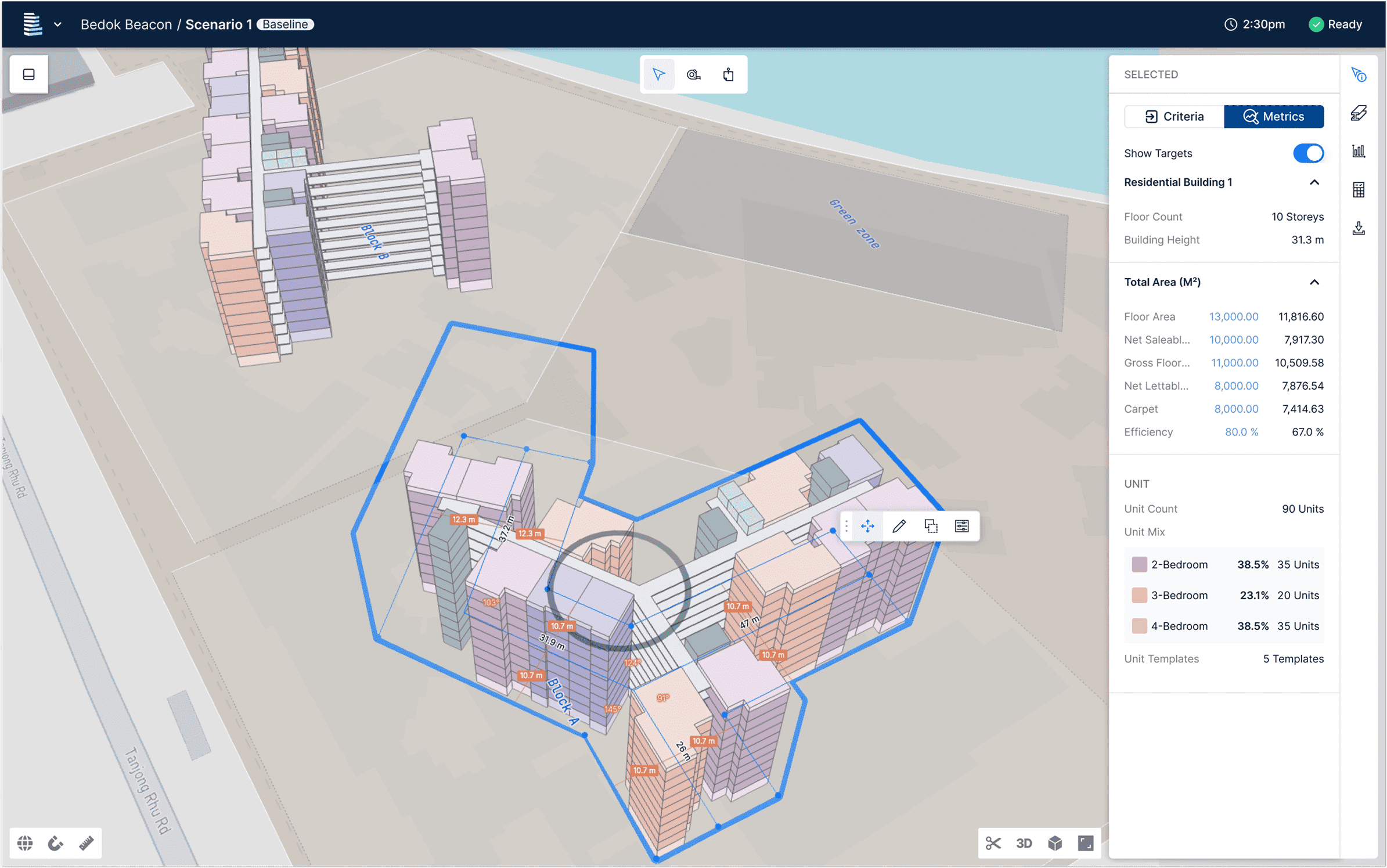3 years at Podium
Podium is a generative design tool for developers, architects and engineers, which delivers build-ready designs in minutes. I joined Podium 3 years ago, which was early in its life. Today, Podium is a fairly mature product that has secured funding from big names like AutoDesk, Schindler, and Lendlease, with potential customers and interests lining up.
My work at Podium mainly stretches from internal products in the early days to a later focus on Podium's design system, supplier features, and design tools.
Podium in 30 seconds
User Interface
The main design interface resembles other design tools such as Figma, Spline, Framer, and Forma. The complexity came in designing for 3D. Interactions around 3D are exponentially more complex than 2D. Combine this with selection tools, edit tools, and communicating with users about all the hidden interactions, which involved weeks to months of product development involving multiple stakeholders.
The interface can be largely divided into two types:
1. Editor
2. Lists & Details
Editor
Editor - Concept and Schematic Design

Editor - Detailed Design
The editor is the most complex feature when it comes to interaction and information display. Progressive disclosure and information architecture are a big part of the editor experience while interacting with the model or navigating between different hierarchies of details. The editor composes mainly Site Space – schematic design for developers and architects – and Detailed Space – detailed design for engineers. There are also individual tools like the spatial editor, the building layout editor, the library and template UI, the spatial and structural inspection UI, and so on.
Lists & Details
Apart from Editor, we have a dedicated space for suppliers to enter their company and product details and showcase their products on Podium to developers and engineers as an integrated service. We have designed this as a CMS platform similar to Shopify or WordPress, incorporating a master-details layout.

Form Designs
Design System
The design system in Podium is a true team effort, as we never had a separate design system team. Though later on I took ownership of the design system, everyone in the team still contributed, and we maintained it together.
The design system evolved two versions during my time at Podium. The first design system, v1.1, was to address inconsistencies across two different products, establishing a collaborative working process for designers and engineers. Collectively, we agreed on the implementation approach for the design system and upgrading to a version 2. During that time, Podium was being tasked to develop internal products within the Lendlease organisation. As a result, we began to explore and incorporate visualisation, advanced table layouts, and form displays into the design system.
At the end of 2023, Podium decided to separate itself as an independent start-up from the Lendlease organisation. Teams were separated, and the design system has been separated. We took this opportunity to upgrade v1.1 to v2 with new branding, typography and token system. We also cleaned our component library to only contain what we need just for Podium.
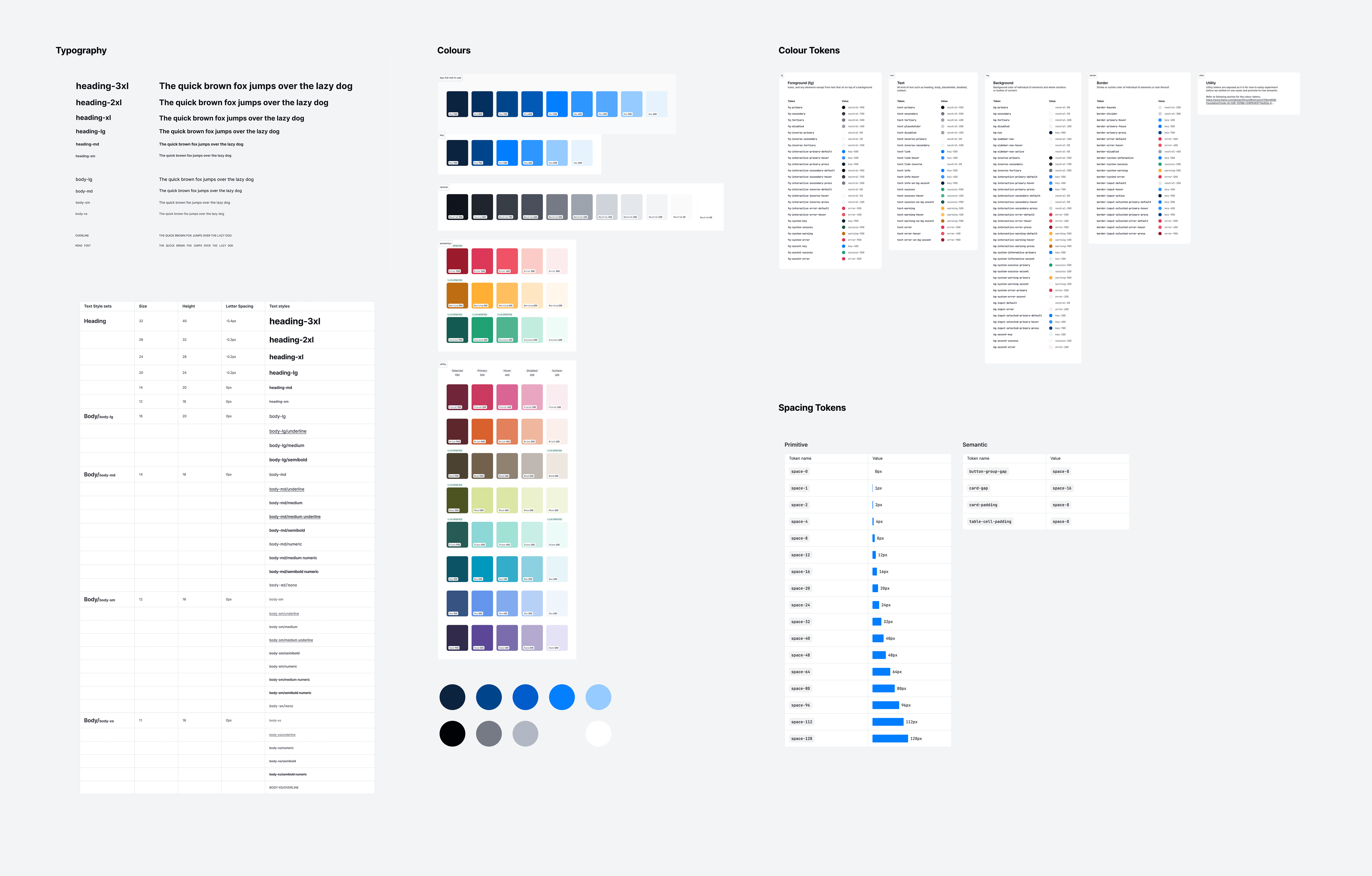
Design System v2.0 - Typography

Design System v2.0 - Icons
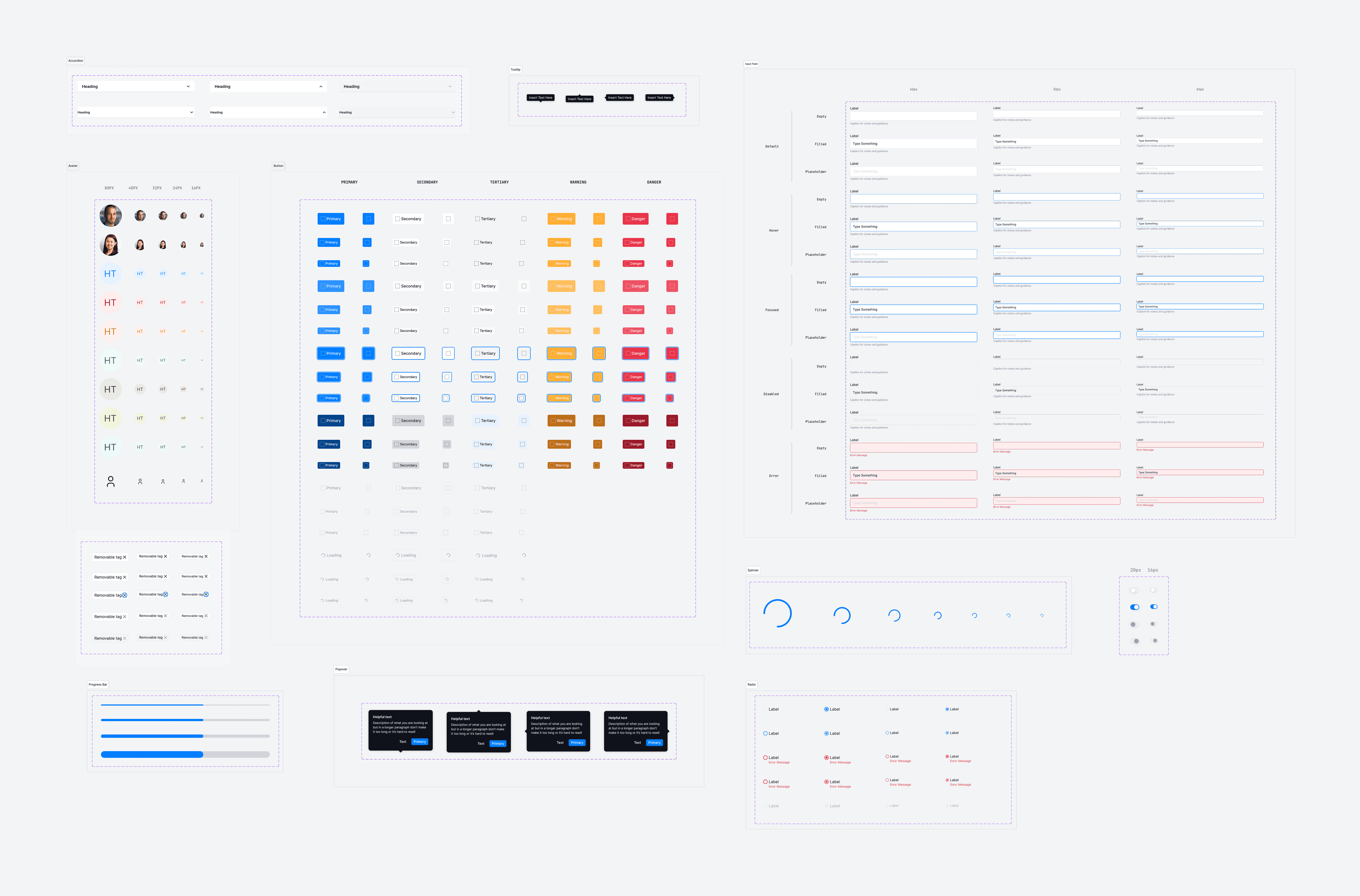
Design System v2.0 - Components
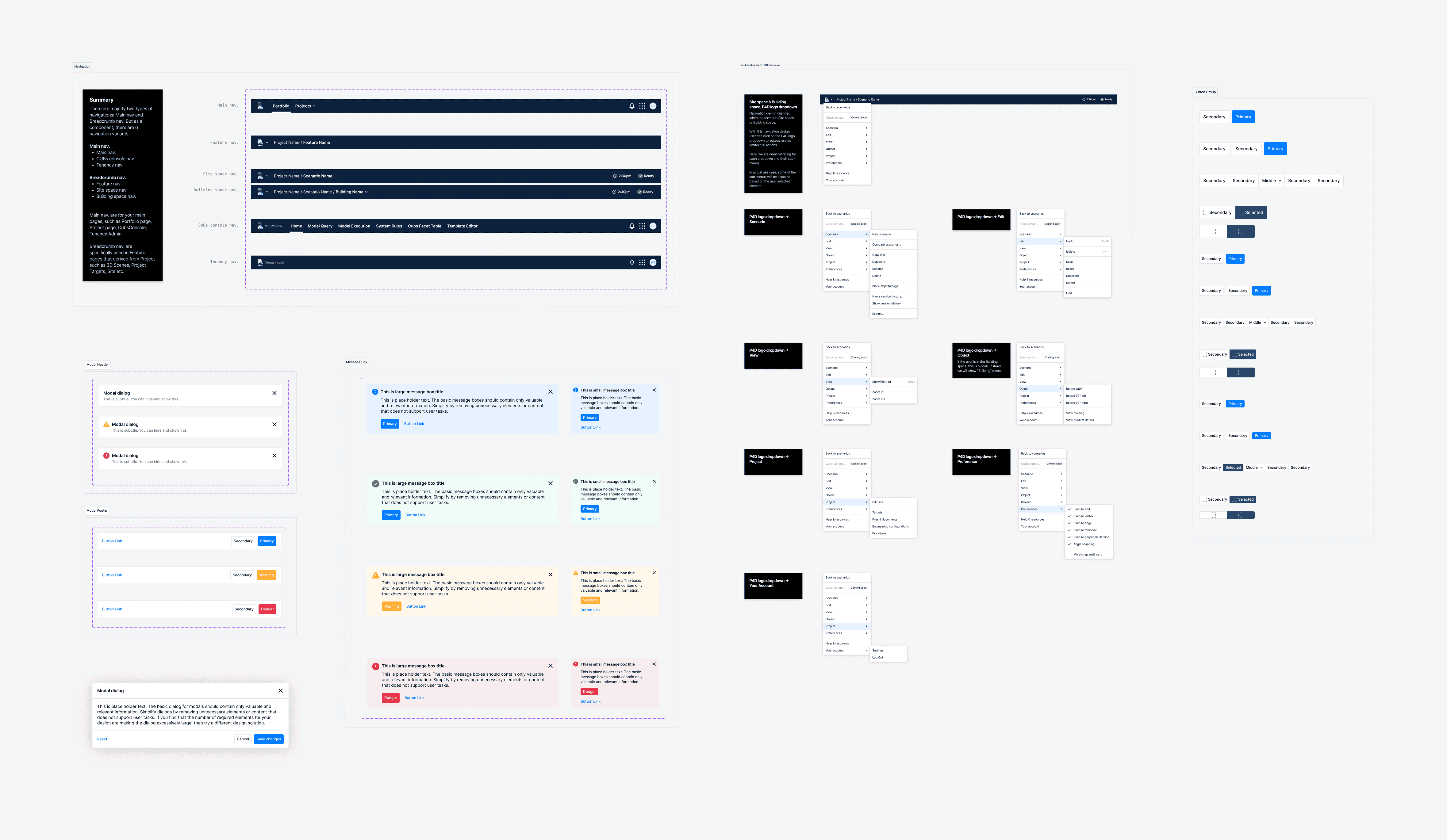
Design System v2.0 - Components
Product Development
A large part of my time was mainly spent on product design and development, participating in the designing of various features of our product. The following are the most notable features that I have worked on in Podium.
Scenarios Comparisons
Scenario comparison is one of the redesigns of the work after we learnt from user feedback on the first iteration of the feature. As the feature name suggested, scenarios comparison allows users to compare different scenarios and their outcomes generated based on different configurations of the building designs.
The old design focused on being able to differentiate scenarios at a glance with thumbnails, compare two "best" scenarios and focus only on the hypothesis of comparing what metric outcomes users would want.
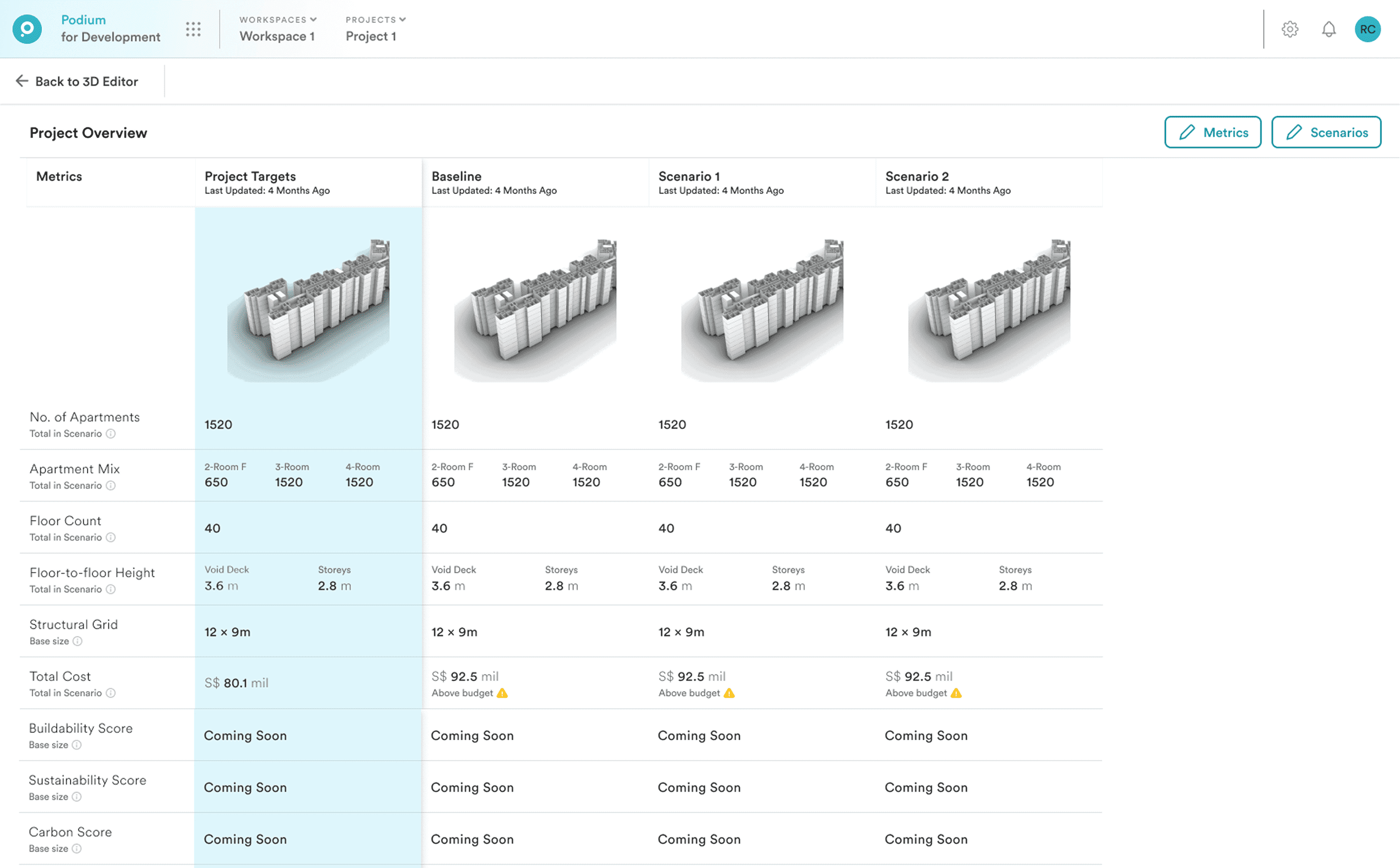
Comparisons v1.0
After releasing the feature and receiving feedback, we realised that the focus and intentions did not align with what users actually needed. A user wants to
- compare metrics by metrics, metrics against targets that they set,
- ability to quickly identify high-performing scenarios and
- Improve the ability to monitor which metrics are meeting targets and which are not.
Also, they would like different sorting and comparison scenarios across metrics in a more visual way. So we came out with a new design to address what users really need and pain points from the previous iteration.

Comparisons v2.0
Supplier Features
Supplier features might be my most impactful contribution to the company and also one of the lessons learnt about product development in a start-up environment.
Supplier features aim to become an ecosystem where designers and suppliers can connect. One aspect of this premise is that suppliers have a profile in the platform, enabling designers to get quick access to basic information, contacts and documentation and product information. And in the future, designers could finally see the products that they would like to use in their building within their context. This vision and capability of supplier features helps secure the Podium S$5 million funding from Schindler, as part of the Series A-1 funding round.
The MVP features for Supplier include setting up company profiles, importing products, managing the product catalogue, and tracking opportunities.

Supplier - Import Product Process
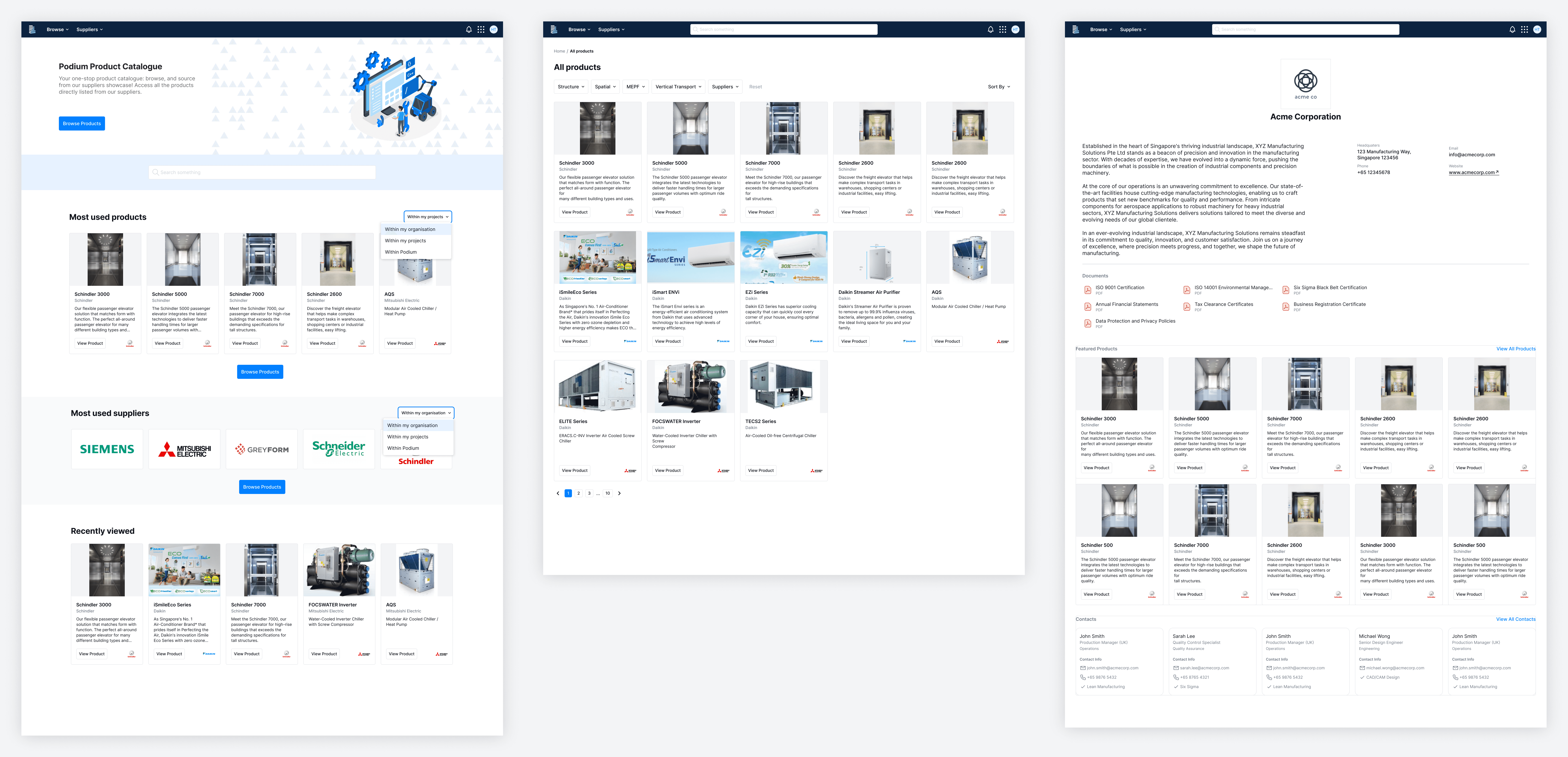
Supplier - Product Catalogue
These features allow suppliers to quickly set up their company and product information in Podium. And with product catalogues and opportunity tracking, suppliers can be connected with designers within the platform.

Supplier - Home
Over the course of 6 months, we designed and delivered these features, mainly to showcase the potential of our platform and ecosystem. Looking back, supplier features are "future ahead" in the product timeline, as this would be complemented by further maturity of the 3D tooling and capability to generate accurate design outcomes.
Process
Our design process is structured to align tightly with product and engineering from problem definition to delivery. We generally work in five stages, each with defined collaborators and deliverables.
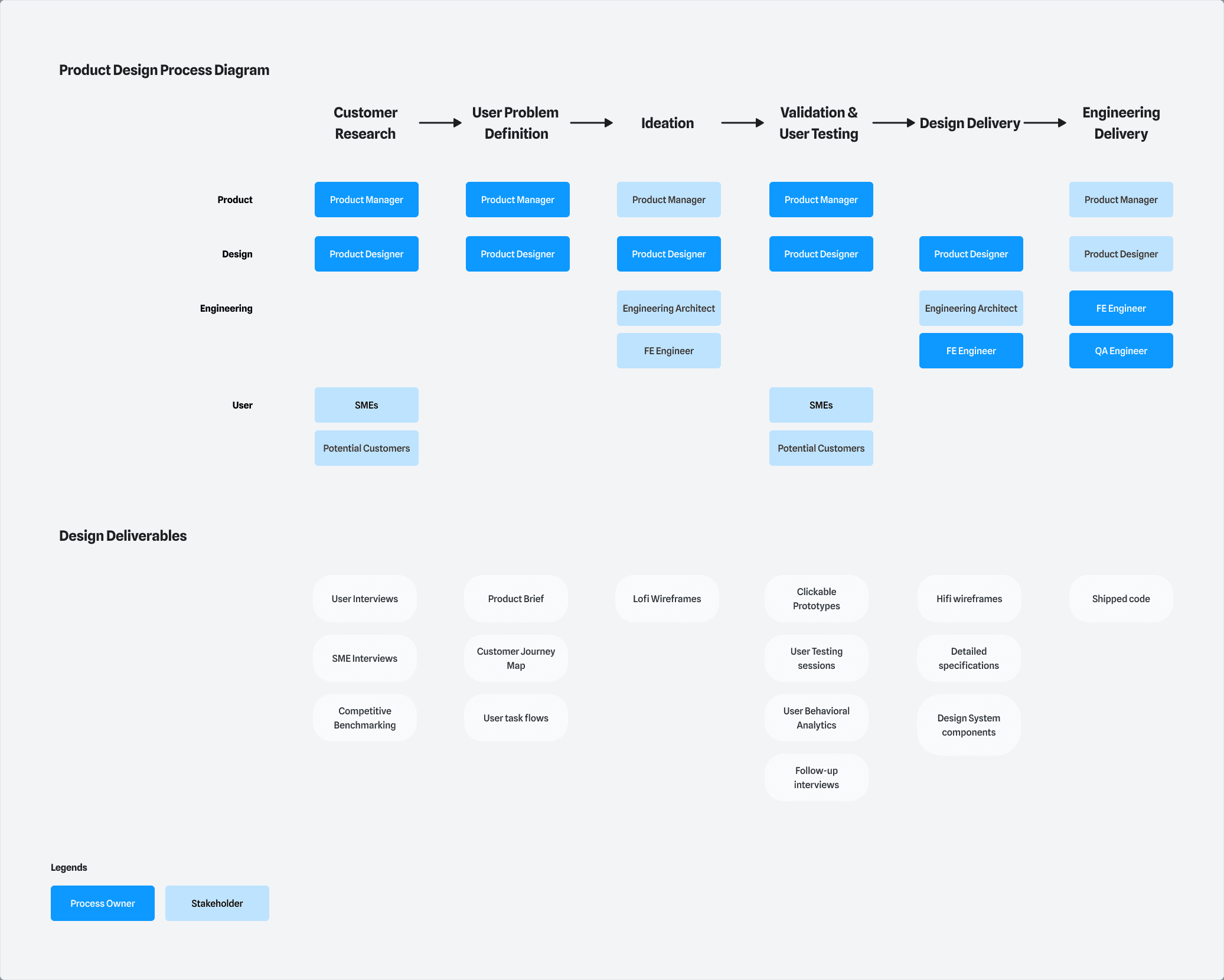
Process Diagram
We begin with Customer Research, where product managers and designers work closely to interview users, subject matter experts, and benchmark competing solutions.
This informs the User Problem Definition stage, where insights are shaped into product briefs, journey maps, and user task flows.
During Ideation, we collaborate with engineering architects and frontend engineers to define technical boundaries early. We sketch and prototype ideas rapidly, moving from lo-fi wireframes to clickable flows.
Validation and User testing is when we test early prototypes with users and refine them based on behavioural data, user testing sessions, and follow-up interviews. These sessions often uncover unexpected constraints or opportunities.
We then move into Design Delivery, where detailed specs, high-fidelity mockups, and design system components are handed over to engineering. Throughout this phase, we stay involved—reviewing builds and aligning closely on implementation.
Our final step is Engineering Delivery, where the code is shipped. Designers continue to partner with engineers during QA to ensure the shipped experience matches the intended design.
Culture
Podium is one of the best workplaces I have ever worked for. The people are very supportive, and we work closely and collectively. Although Podium originated within a corporate culture, our team has consistently embraced a startup spirit and the freedom to explore and propose initiatives since the early days. There were monthly and quarterly workshops and forums to align ourselves with product goals, sharing new technologies and our findings during the product development process.

Product and Design workshop - end 2023
The design team in particular was a collection of amazing people. They are talented, friendly, and generally nice people to be surrounded by. Though some of us have left the company, we are still friends, keeping in touch, and I am grateful for it. I have learnt a lot from these people.
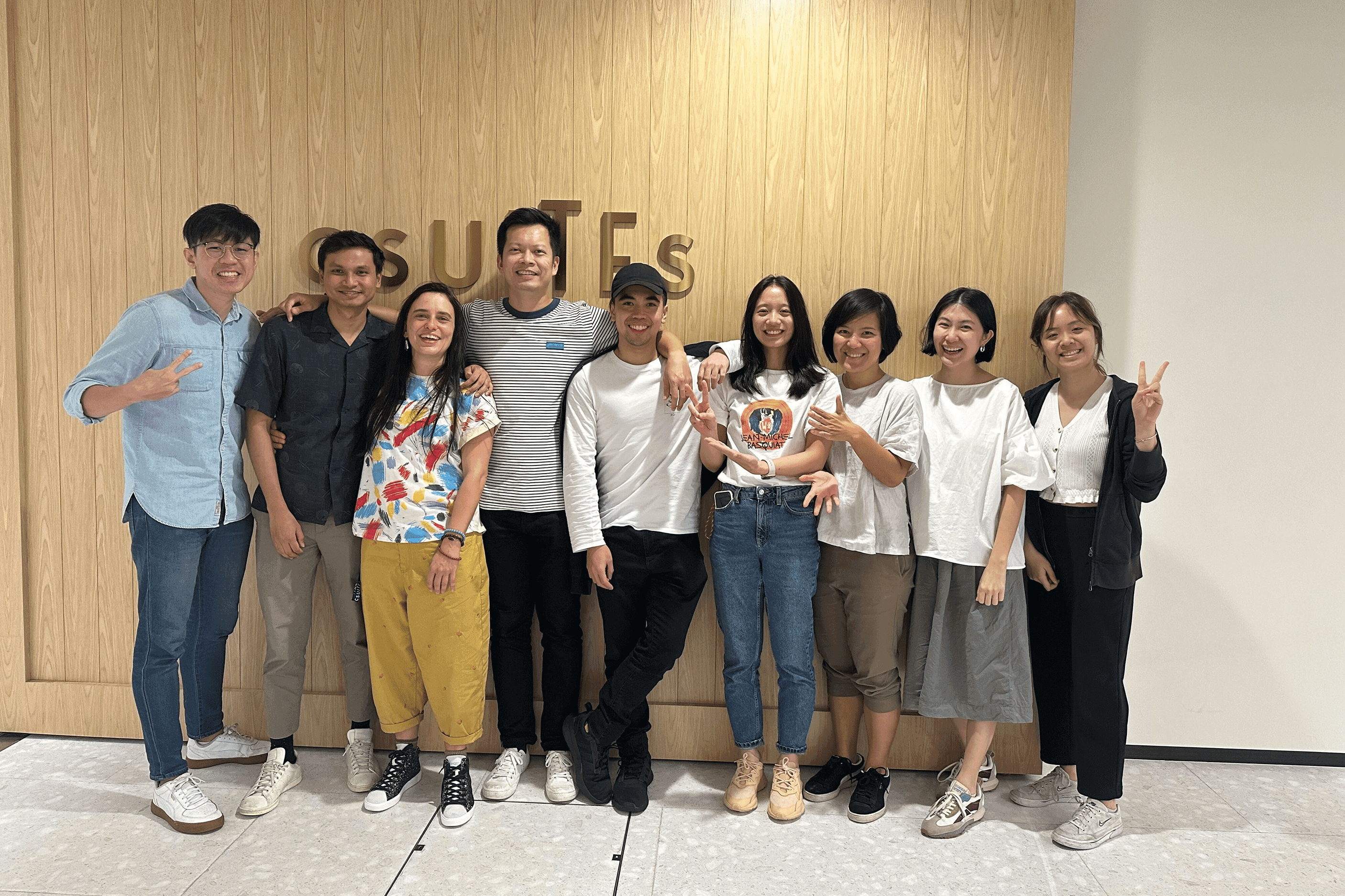
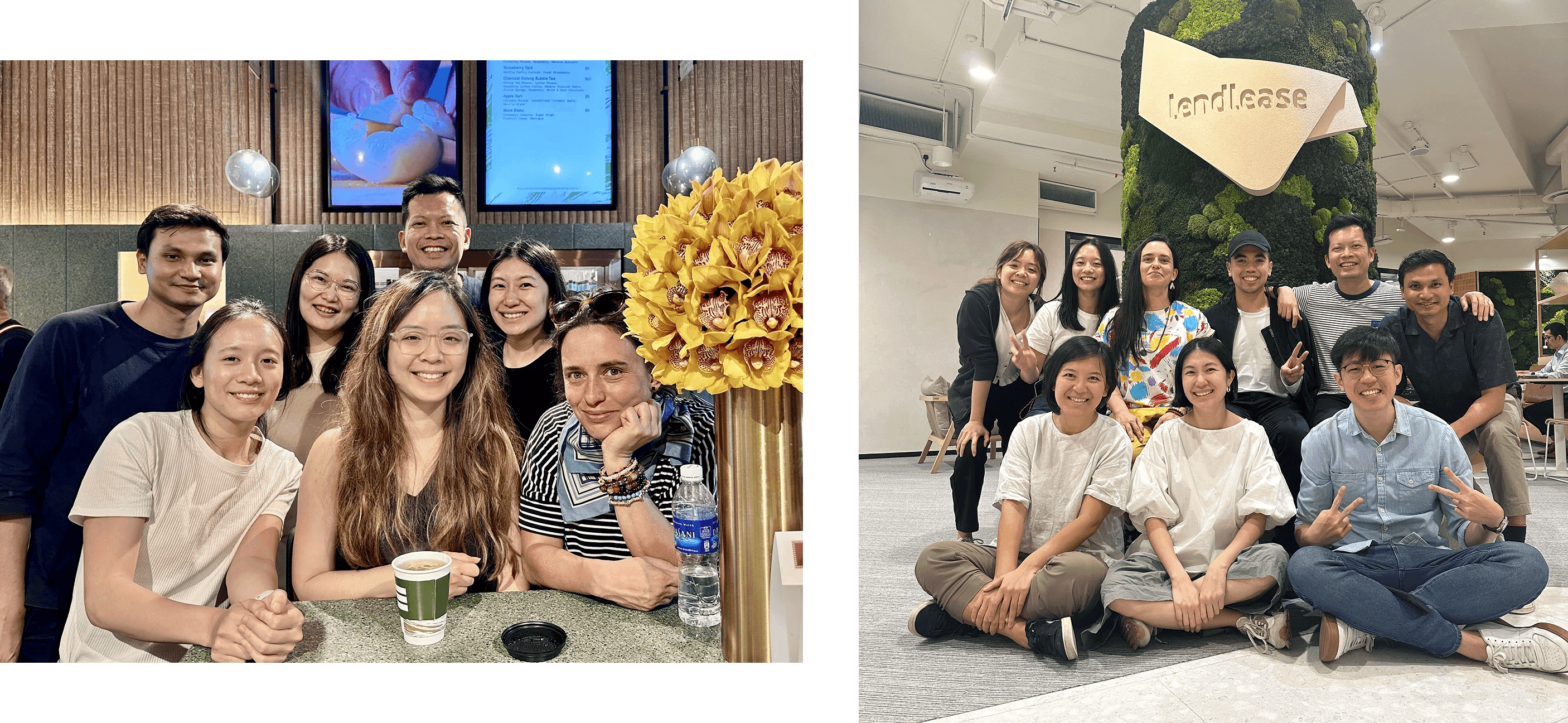
Podium Design Team 2023-2024
